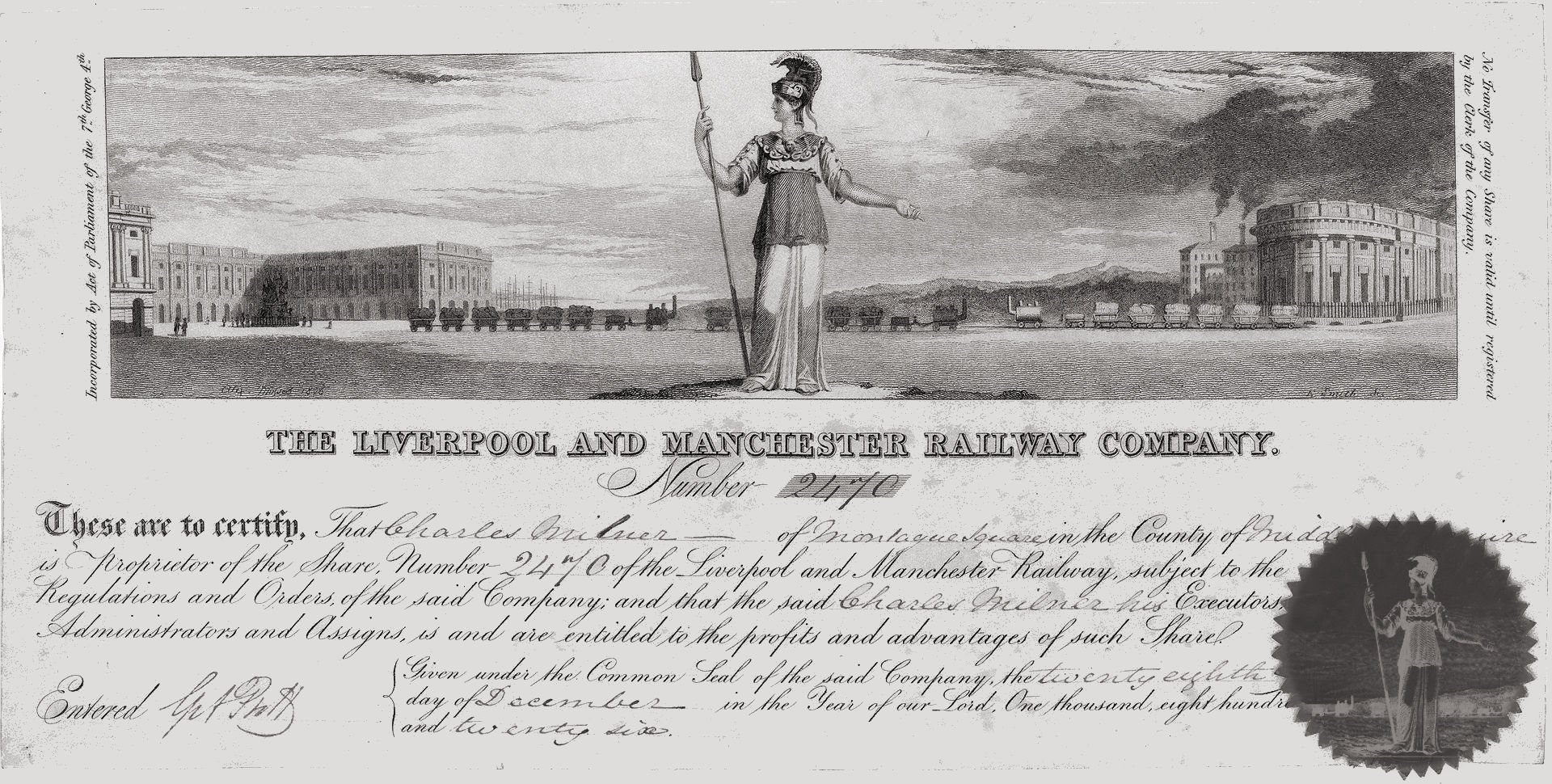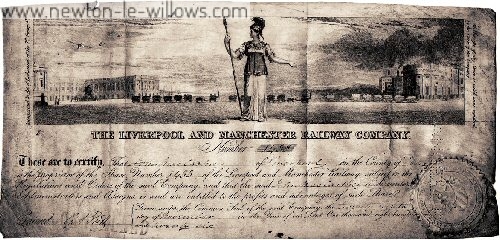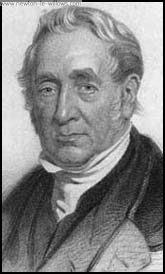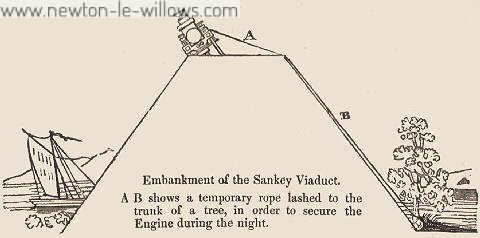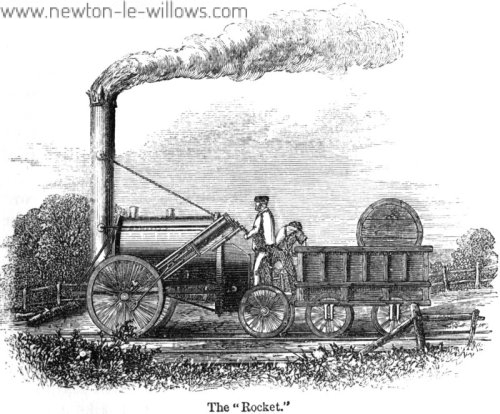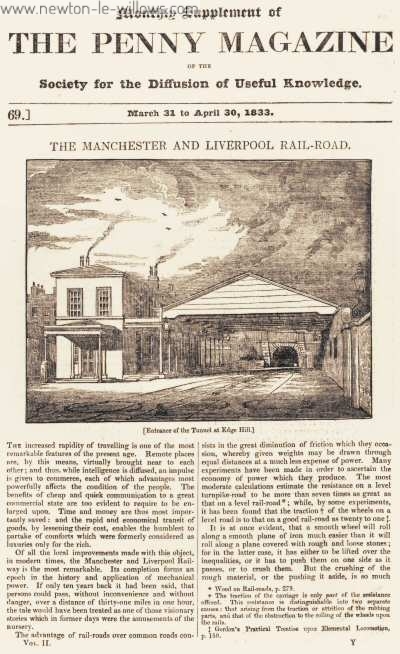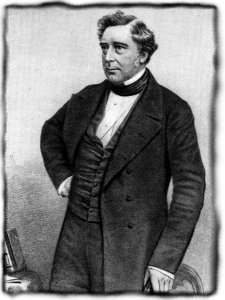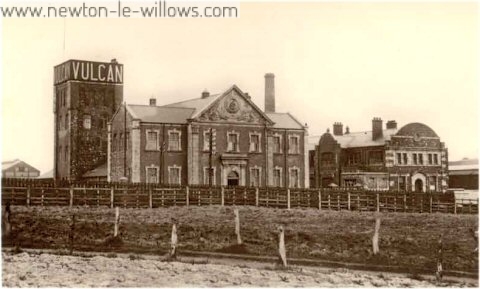While searching for some details in old newspapers concerning the Sankey Viaduct, I read quite a few articles from 1824 onwards related to the efforts and construction of the LMR which help set the scene and show just some of the massive efforts made to its eventual opening. There’s lots online about the Rainhill Trials and the Opening day which unfortunatly saw the accident and death of Mr Huskisson, but not so much about the lead up to the opening, the construction, or even that Mr Huskisson had already travelled…
Read More >>Tag: Liverpool Manchester Railway
The Liverpool & Manchester Railway
The Cotton Trade In the latter part of the eighteenth century, the area surrounding the port of Liverpool and the growing town of Manchester was rapidly expanding. The American colonies had played a large part in promoting Liverpool as the port of import, and Manchester as the finishing centre for their cotton. Liverpool also dealt with the importation of rum, tobacco and slaves as well as establishing itself as the chief trading port with Ireland ? importing yarn which was then sent to Manchester. As an example of the enormous…
Read More >>History of the Vulcan Foundry
History of the Vulcan Foundry, Newton le Willows 1781 George Stephenson was born at Wylam-on-Tyne, Northumberland. 1785 Charles Tayleur was born. 1803 Robert Stephenson was born at Willington Quay, Northumberland. 1816 Daniel Gooch was born in Bedlington, Northumberland, on 24th August, 1816. 1823 George Stephenson founded a locomotive works at Newcastle-on-Tyne. 1829 The Rocket was built by Robert Stephenson & Co. and won the prize of £500 at the Rainhill Trials that were held to determine the most suitable type of locomotive for the new Liverpool and Manchester Railway.…
Read More >>Sankey Viaduct Train Derailment
LIVERPOOL AND MANCHESTER RAILWAY?FURTHER PARTICULARS. Performance of the Engines. It has been stated in several of the newspapers, by way of apology for the delay which took place in the re-turn of the rear division of the pro-cession from Manchester on the day of the opening, that it arose from an apprehension that, as night had come on, accidents might have arisen from proceeding at a more rapid rate. The authors of this apology forget that at the same time the night came on the expectant crowds went off, and…
Read More >>Locomotives or Stationary Engines
In November 1828 a report on the question of whether it would be better to work the Liverpool and Manchester Railway by stationary engines or by locomotives, was sent to George Stephenson, by the directors of that railway, these letters which I have transcribed are the replies, sent by George Stephenson and his son Robert to the report and other questions. Allthough not strictly Newton History, It shows the behind the scenes politics at a time, Imagine the course Newtons History would have run if the trains had been pulled…
Read More >>The Manchester and Liverpool Rail-Road
The Manchester and Liverpool Rail-Road The increased rapidity of traveling is one of the most remarkable features of the present age. Remote places are by this means, virtually brought near to each other; and thus, while intelligence is diffused, an impulse is given to commerce, each of which advantages most powerfully effects the condition of the people. The benefits of cheap and quick communication to a great commercial state are too evident to require to be en-larged upon. Time and money are thus most importantly saved: and the rapid and…
Read More >>The Sankey Viaduct ( Nine Arches Bridge )
It was then that the wealthy Quaker Joseph Sandars met William James, who proposed a railway which he undertook to build in 18 months at a cost of £100,000. Though his offer was accepted, long delays then occurred and by 1824 he was succeeded by George Stephenson as the company’s engineer. The next year a Parliamentary Bill was introduced, but it failed principally owing to Stephensons inability to answer questions on his survey by opposing counsel. He was accordingly dismissed by the board, who appointed the professional civil engineers Sir…
Read More >>History of the Liverpool and Manchester Railway
On Sunday 18 September 1955 several founder members of the R. & C.C.S. visited Rainhill, Parkside, Newton and other historic places on the Liverpool and Manchester Railway. This is a short history of the railway, prepared earlier the same year by G.O. Holt for the Railway and Canal Historical Society, I transcribed this from the publication they produced. A SHORT HISTORY OF THE LIVERPOOL AND MANCHESTER RAILWAY Any history of this line must begin with a tribute to the enterprising spirit that brought about its great success. For several years…
Read More >>A visit to the works of the Vulcan Foundry, 1927
The party travelled by 1.0 p.m. train from Exchange Station, Manchester, to Earlstown Junction, a saloon having been engaged for their accomodation. On arrival at the works at 1.45 p.m., the party were welcomed by Mr. Whalley, and also Mr. Lane, Works Manager, who together with other members of the staff, personally conducted the members round the works. Much interest was displayed in the three-cylinder compound engines which were being built for the L.M.S. Railway Company. There was evidence on every side of up-to-date methods of manufacture and good workmanship.…
Read More >>